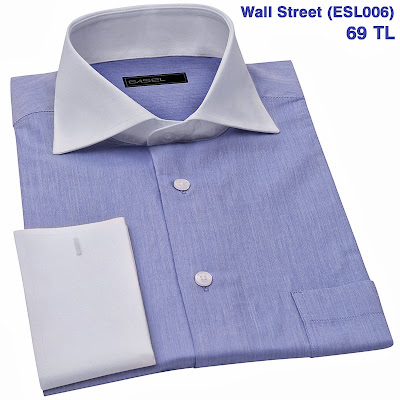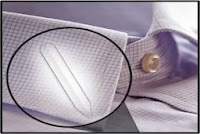Understanding the Effect of
Contrast on Color Selection
The first thing a person notices about a man's dress shirt is its color. In a crowded room of men in suits, your choice of dress shirt color will either help you stand out or blend in. Neither of them is a bad thing, it depends on your intention. The more important question here is: do you know how to mix and match your clothing to fulfill your intention? The only way to do this right is to understand what colors complement you.
The first thing a person notices about a man's dress shirt is its color. In a crowded room of men in suits, your choice of dress shirt color will either help you stand out or blend in. Neither of them is a bad thing, it depends on your intention. The more important question here is: do you know how to mix and match your clothing to fulfill your intention? The only way to do this right is to understand what colors complement you.
The Role of Skin Complexion, Hair,
and Eye Color
The two most important factors in selecting dress shirt color are skin tone and hair color. Eye color is a wild-card factor; sometimes it strongly contrasts a man's complexion and hair color. It is the relationship between these three factors that determines what contrast category a man falls into: High, Low or Medium Contrast.
High Contrast Men
These are men whose hair color is a stark contrast to their skin tone; black hair with white skin is a perfect example. For high contrast men the key to looking good is to be able to mimic this color difference in their clothing with the contrast in their facial zone. A dark navy blue suit with a white dress shirt or a charcoal grey suit matched with an ice blue dress shirt are two combinations that complement high contrast men. Dark shirt with light suit is also an option but requires more skillful & careful pairing. High contrast men are always complemented by strong ties that stand out from the shirt.
Low Contrast Men
As the name suggests, these are men with a muted appearance. Light hair and light skin is the most common variant, but men with red hair, bald men, and men with little hair also fall into this category. The strengths of these men are the exact opposite of the high contrast men above. Low contrast men should seek a monochromatic look, as that a strong contrasting outfit will easily overpower their muted tones. Remember the purpose of a frame (your clothing) is to enhance the picture (your face). In general, low contrast men fair well with dark blues and earth tone dress shirts combined with dark suits. When wearing light gray or tan suits, the low contrast gentlemen needs to stay with lighter colored shirts and earth tones; white is permissible here if the suit is light enough to avoid a stark contrast. Be careful in your choice of tie, if the neck-wear stands out too much it can draw attention from your face to your chest and stomach.
Medium Contrast Men
If you don't fall into one of the two extremes, you most likely fit into this group. Brown skinned men with dark hair are common members, along with lighter skinned men and with gray and white hair. With such a wide selection of facial tones and hair colors, it's hard to give specific guidance in this category. To sum it up, medium contrast men can enjoy the best of both worlds, but should be careful when venturing too far in one direction.







+(2).jpg)
+(1).jpg)

+(2).jpg)





















.jpg)


